|













|
Catalogue of the Oasis Museum, hall 11:
Nomad life
While cattle raising takes place inside the ksars, sheep, dromedaries and goats
require a constant search for new pastures.
In order to shepherd the herds, a part of the population practices nomad life.
They live in tents and carry all their belongings with them.
Due to such a hard life, these shepherds are much stronger, more resistant and
braver than the sedentary farmers. For this reason, in ancient times there was a relationship of dependence between the nomad protectors
and their counterparts who farmed in the oasis.
|
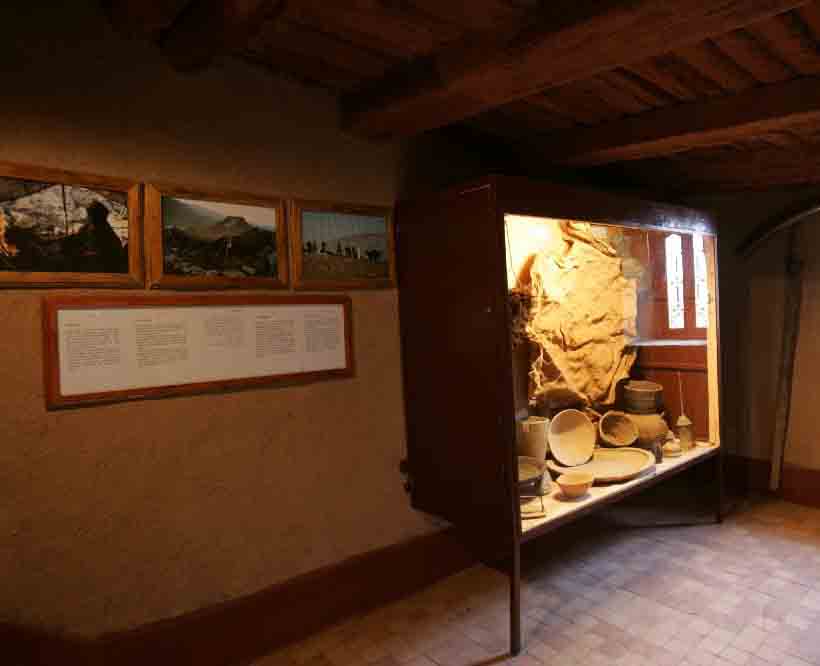 |
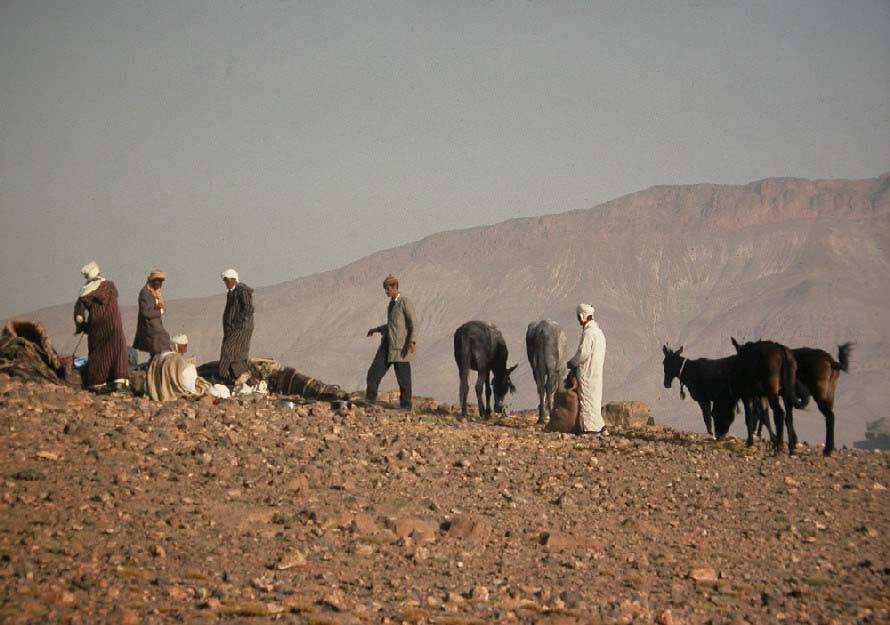
Central High Atlas
Photo: Roger Mimó, 1992
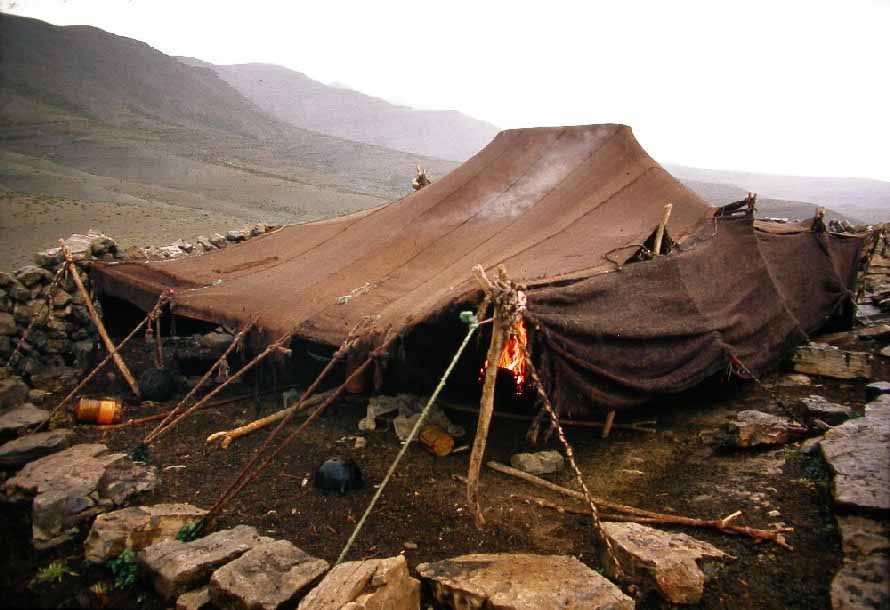
Central High Atlas
Photo: Roger Mimó, 1992
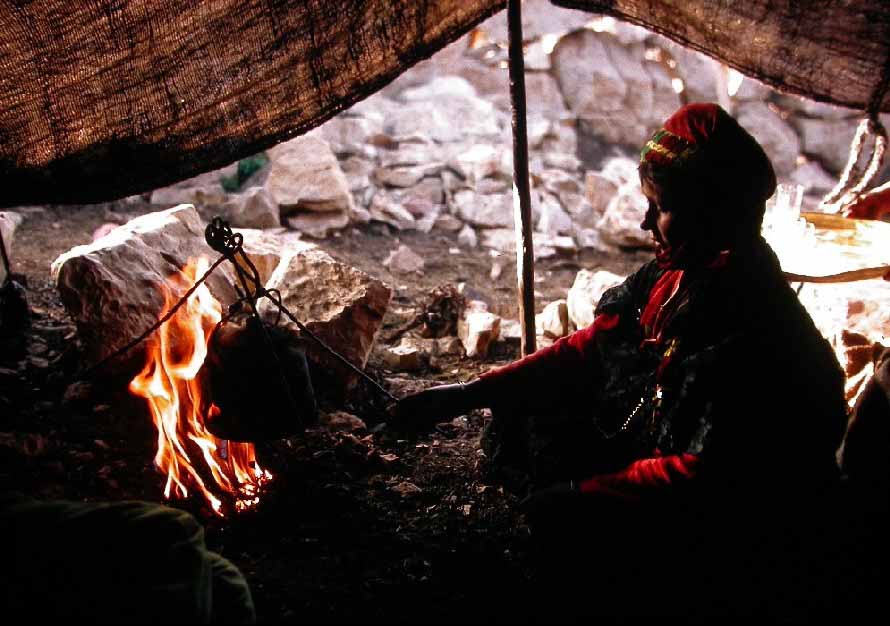
Central High Atlas
Photo: Roger Mimó, 1992
 |
Tent structure
Origin: Atlas, 20th century. Ref. 632/634. |
|

|
Central support of a tent
Origin: High Atlas, 20th century. Ref. 635. |
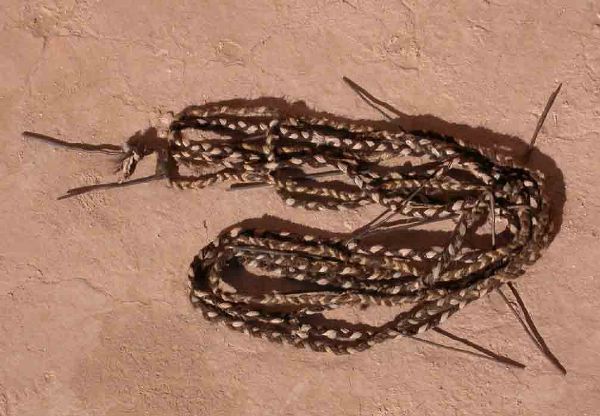 |
Cord to fix the walls of tent
Origin: High Atlas, 20th century. Ref. 636. |
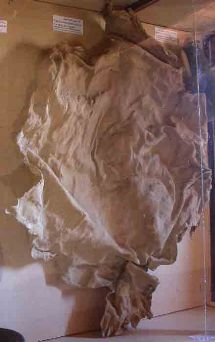
Dromedary skin for transport baggage
Origin: Ferkla, 20th century. Ref. 637. |
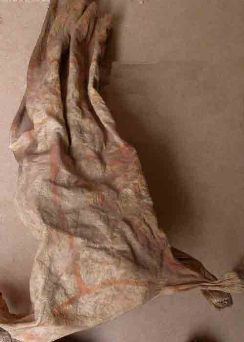
Bag for valuable objects
Origin: Ferkla, 20th century. Ref. 638. |

Jewelry bag
Origin: Ferkla, 20th century. Ref. 639. |
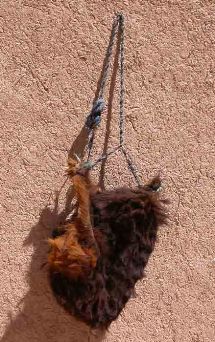
Goatskin container for water
Origin: Ferkla, 20th century. Ref. 640. |
 |
Wood box for transport baggage
Origin: Ferkla, 20th century. Ref. 962. |
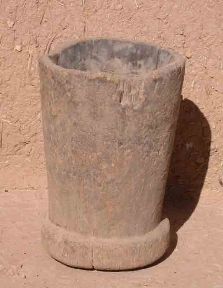
Wood mortar
Origin: Ferkla, 20th century. Ref. 641. |
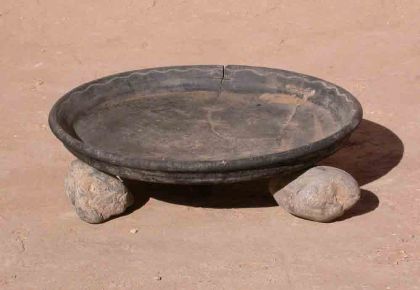
Plate to cook bread
Origin: Ferkla, 20th century. Ref. 642. |
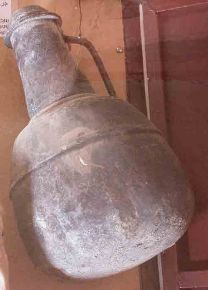
Copper jar to transport and warm water
Origin: Ferkla, 20th century. Ref. 643. |
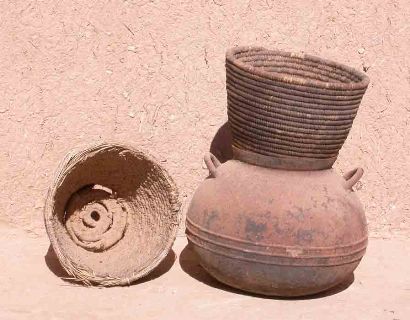
Couscous casseroles made of palm leaves
Origin: Ferkla, 20th century. Ref. 644/646. |
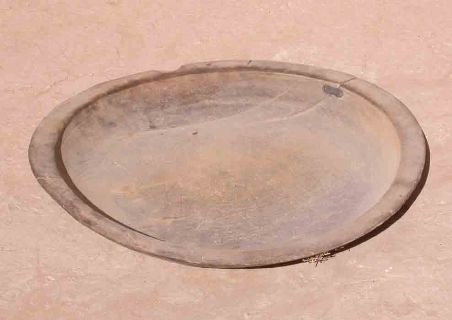
Wood couscous platter
Origin: Ighrem n'Ouchtine, High Atlas, Ait Abdi section of Ait Sokhmane tribe, 20th century. Ref. 647. |
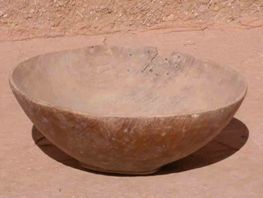 Wood bowl
Wood bowl
Origin: Ferkla, 20th century. Ref. 648. |
 Jackal trap
Jackal trap
Origin: Ferkla, 20th century. Ref. 649. |
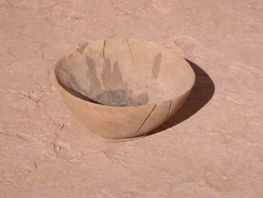 Wood bowl
Wood bowl
Origin: Ferkla, 20th century. Ref. 650. |
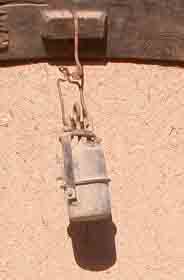
Acetylene lamp
Origin: Ferkla, 20th century. Ref. 651. |
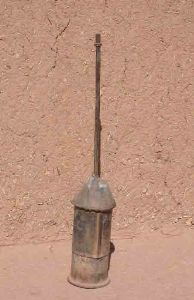 Carbide lamp
Carbide lamp
Origin: Ferkla, 20th century. Ref. 652. |
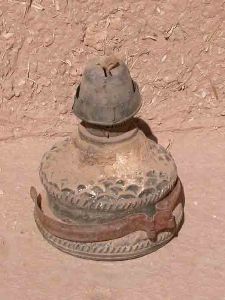 Oil lamp
Oil lamp
Origin: Ferkla, 20th century. Ref. 653. |
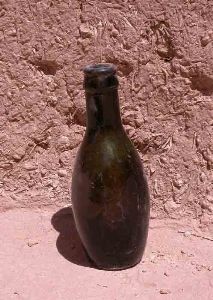 Bottle of tar to use to keep vermin away
Bottle of tar to use to keep vermin away
Origin: Ferkla, 20th century. Ref. 654. |
See other sections:
© Maison d’Hôtes El Khorbat s.a.r.l.








|